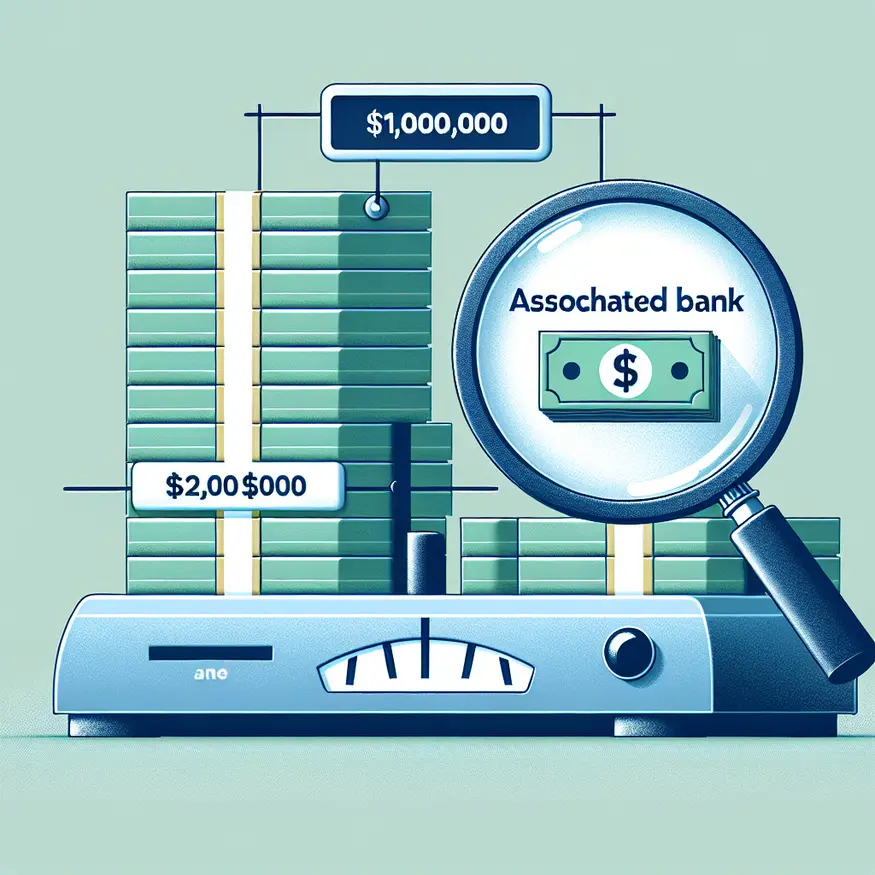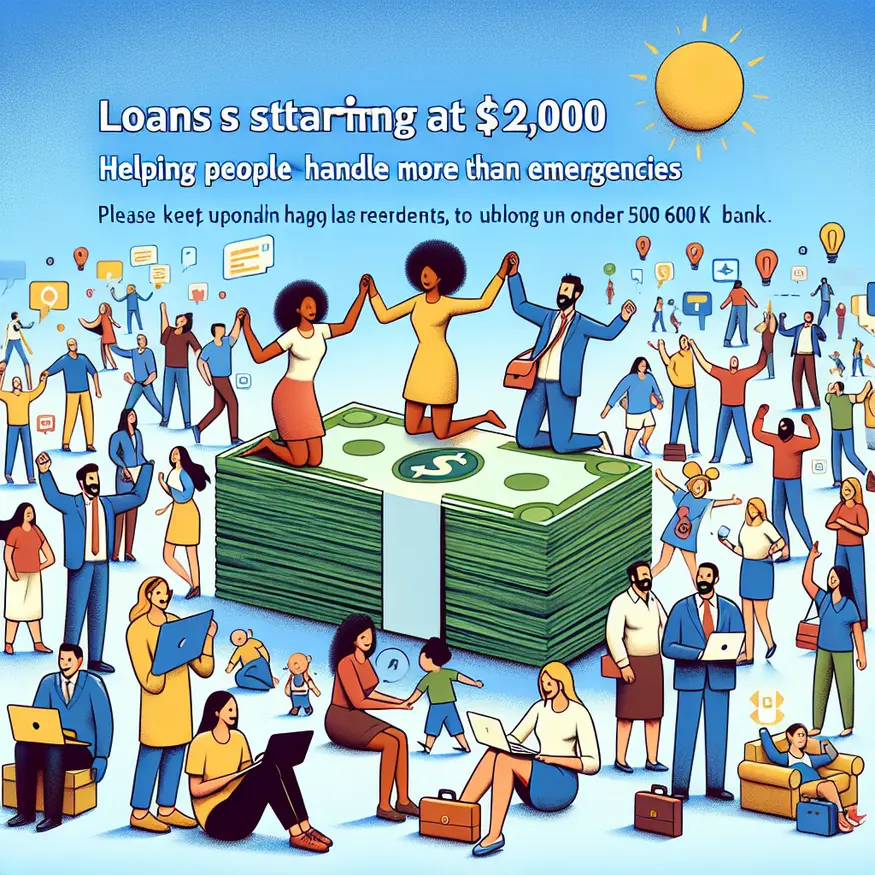Looking for $1,000 to $25,000? See What U.S. Bank Personal Loans Can Cover
Discover how personal loans from U.S. Bank can help you finance expenses ranging from $1,000 to $25,000 with ease and flexibility.
Flexible personal loan options tailored to your financial needs.
Applying for a loan can feel overwhelming and stressful, especially when you’re unsure about the interest rates and fees involved. Many people face challenges understanding the loan application process and how loan interest impacts their monthly payments. If you’ve ever worried about getting the best loan deal, you’re not alone.
To help you through this, we’ll break down each step clearly so you feel confident and informed. Below is an outline of what you’ll discover in this article:
- Loan fees
- Personal finance
- Online application
It’s crucial to fully understand loan fees, personal finance management, and how to navigate the online application process correctly. This article will provide practical tips, clear explanations, and shortcuts that make everything easier, so you can secure the best loan possible without confusion or regrets.
Loan fees
Understanding loan fees is your first step toward a smart borrowing decision. Loan fees include all additional costs the lender may charge aside from the principal amount and interest. These can significantly affect the overall cost of your loan.
Common loan fees include origination fees, application fees, late payment fees, and prepayment penalties. The origination fee is typically a percentage of the loan amount and covers the cost of processing your application. Knowing these fees ahead of time prevents surprises later.
For example, if you apply for a $10,000 loan with a 2% origination fee, you’ll pay $200 upfront or have it added to your loan balance. Some loans have no fees at all, so comparing offers is essential to find a low-cost option.
Late payment fees can add up quickly if you miss deadlines, damaging your credit and increasing your debt. Always aim to pay loans on time to avoid these penalties.
Prepayment penalties are less common but important to check. If you plan to repay your loan early, some lenders charge a fee since they lose interest income. Choose loans with no prepayment penalties if you want flexibility.
To keep track of all fees, always ask the lender for a detailed loan disclosure document before signing anything. This way, you understand exactly what you’re paying for and can budget accordingly.
Recognizing these fees as part of the loan total helps you compare offers more effectively, saving money in the long run. Remember, the lowest interest rate doesn’t always mean the cheapest loan if fees are high.
Personal finance
Loans are just one part of your personal finance puzzle. Before applying for a loan, assess your overall budget, income, and existing debts to make sure borrowing is necessary and manageable.
Start by listing your monthly income and all expenses, including rent, utilities, food, transportation, and current debts. This will give you a clear picture of how much extra you can afford to pay toward a new loan.
It’s helpful to calculate your debt-to-income ratio (DTI). This means dividing your total monthly debt payments by your gross monthly income. Lenders also check this number. Generally, a DTI below 36% is considered good for loan approval.
If your DTI is high, consider paying off existing debts or reducing expenses before applying for a loan. This improves your chances of approval and may result in better interest rates.
Make sure you understand how loan interest works to avoid unnecessary financial burden. Interest is what you pay for borrowing money, calculated as a percentage of the loan amount. Lower rates mean less money paid over time.
Choose a loan term that fits your financial goals. Shorter-term loans usually have higher monthly payments but less total interest, while longer terms lower monthly costs but increase total interest paid.
Always prepare an emergency fund to cover unexpected expenses during your loan period. This prevents missed payments and potential damage to your credit score.
Online application
Applying for a loan online is convenient but requires preparation to increase your chances of approval. Here’s a simple step-by-step guide to help you complete your online loan application smoothly:
- Gather Required Documents: Prepare identification, proof of income, employment details, and credit history if available. Having these ready speeds up the process.
- Research Lenders: Compare interest rates, fees, and loan terms from multiple lenders. Use trusted websites or go directly to bank sites.
- Create an Account: Most lenders require creating an account on their platform. Ensure you use a secure and private connection.
- Fill Out Application: Enter personal information, loan amount desired, purpose of the loan, and financial details accurately. Mistakes can delay approval.
- Review Loan Terms: Carefully read interest rates, fees, repayment schedule, and penalties before submitting.
- Submit Application: Once reviewed, submit the form and wait for a decision, which can take from minutes to a few days depending on the lender.
- Respond Promptly: If additional information is requested, provide it quickly to avoid delays.
- Sign Agreement Electronically: Most lenders offer electronic signing for quick access to funds once approved.
Applying online also allows you to track your application status instantly and receive updates by email or mobile app notifications.
Online applications often offer pre-qualification tools that let you estimate your loan terms without affecting your credit score. Take advantage of these to explore your options with no risk.
When you’re ready to apply, check out these personalized loan offers for easy application and competitive terms:
Personal Loan at Wells Fargo 🏦
Bank of America Loan Application
How loan interest affects your repayments
Loan interest is the price you pay to borrow money and it can be either fixed or variable. Fixed interest stays the same during the loan term, making budgeting easier. Variable interest can change with market rates, which might lower or raise your payments.
The interest rate, expressed as an annual percentage rate (APR), influences your monthly payment amount and total repayment cost. For example, a 5% APR on a $10,000 loan will cost less over time than an 8% APR.
Knowing how to calculate your interest can save you money. Use online loan calculators to input different rates and terms and see how payments change.
Paying extra on principal early in the loan term reduces the overall interest you pay. This is because interest is calculated based on the remaining balance.
Always review the amortization schedule, which shows you how much of each payment goes to interest and principal. This gives you a clear picture of the cost breakdown over time.
For loans with variable rates, stay informed about current economic conditions that affect rates to anticipate payment changes.
If you’re unsure about any part of the interest or repayment process, consult a financial advisor or lender’s representative to avoid costly mistakes.
Tips to avoid common loan pitfalls
Many borrowers make avoidable mistakes that increase their loan costs or cause approval delays. Here are important tips to keep you on track:
- Don’t apply to multiple lenders at once — too many credit inquiries can harm your credit score.
- Read every term and condition before agreeing — hidden fees or clauses can surprise you later.
- Don’t borrow more than you need or can repay comfortably to avoid debt stress.
- Make payments on time — late payments hurt credit scores and increase fees.
- Keep communication open with your lender if you experience financial difficulties. Some provide hardship options.
- Keep your personal information safe during online applications to prevent fraud.
- Check your credit report for errors before applying, and correct any issues to improve loan eligibility.
- Understand how the loan fits into your larger financial goals and avoid using loans to cover habitual overspending.
Product spotlight: Personal loans to suit your needs
Personal loans come in many forms to help you meet various financial goals. Here are a few popular options to consider:
- Unsecured personal loans: Do not require collateral and typically offer fast approval.
- Secured personal loans: Require collateral like a vehicle or savings account but often have lower interest rates.
- Debt consolidation loans: Help you combine multiple debts into one manageable monthly payment.
- Online personal loans: Offer quick application processes and digital management, perfect for tech-savvy borrowers.
- Fixed-rate loans: Provide stable payments and budgeting peace of mind.
- Variable-rate loans: Potentially lower initial rates but with payment fluctuations.
Choosing the right loan product depends on your credit profile, financial needs, and ability to repay. Always compare products carefully before committing.
To explore trusted lenders with competitive personal loan options, check the resources below:
Apply for Wells Fargo Loan Today
Wells Fargo Loan Rates & Terms
Conclusion
Now you understand the critical factors of loan applications, loan fees, personal finance, and how online applications work. Knowing how loan interest affects your repayments and the types of loans available empowers you to make confident financial decisions.
Take your time, compare multiple options, and use the tools provided to avoid costly mistakes. The right loan can help you achieve your goals without unnecessary stress.
Ready for more tips? Check out our next article to discover how to improve your credit score before applying for a loan. Keep moving forward with confidence! 🚀

Need Flexibility? Fifth Third Bank Offers Loans Starting at $1,000 for a Variety of Uses
Looking for ways to borrow money can be stressful and overwhelming, especially when you need quick cash for unexpected expenses or big purchases. Many people face confusion about how to apply for loans and worry about hidden costs that accompany borrowing. If you’ve ever felt uncertain about the loan application process and its impact on […]

From $1,000 to $25,000: Associated Bank Loans You Might Not Know About
Finding the right bank loan can feel overwhelming, especially when you’re juggling bills, unexpected expenses, or planning for the future. Many people struggle with confusing loan offers and unclear terms, leaving them uncertain about which option fits their needs best. If you’re seeking clarity and confidence in choosing a loan, you’re not alone. Let’s dive […]

Santander Loans Starting at $2,000: Helping People Handle More Than Emergencies
When unexpected expenses arise or a financial opportunity knocks, finding the right loan can be both a relief and a challenge. Many people feel overwhelmed by the choices between personal loans and traditional bank loans, unsure of what fits their needs best. Understanding these options can help you take control of your financial future with […]